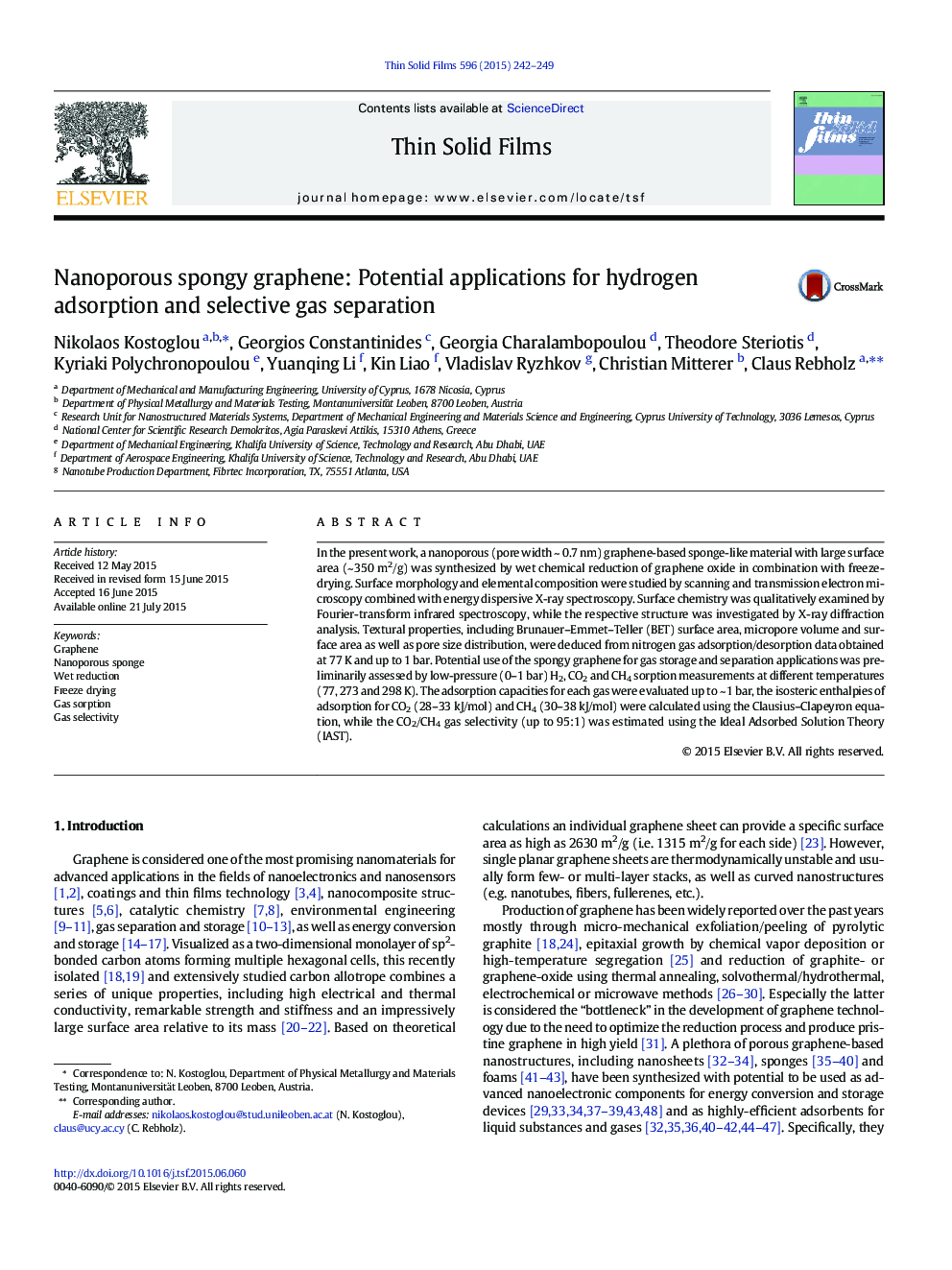| کد مقاله | کد نشریه | سال انتشار | مقاله انگلیسی | نسخه تمام متن |
|---|---|---|---|---|
| 1664533 | 1518013 | 2015 | 8 صفحه PDF | دانلود رایگان |
• Nanoporous sponge produced by chemical reduction of graphene oxide and freeze-drying
• Characterization performed using SEM, EDS, TEM, FT-IR, BET and XRD methods
• Gas storage performance evaluated towards H2, CO2 and CH4 adsorption up to 1 bar
• CO2 over CH4 gas selectivity estimated between 45 and 95 at 273 K using the IAST model
In the present work, a nanoporous (pore width ~ 0.7 nm) graphene-based sponge-like material with large surface area (~ 350 m2/g) was synthesized by wet chemical reduction of graphene oxide in combination with freeze-drying. Surface morphology and elemental composition were studied by scanning and transmission electron microscopy combined with energy dispersive X-ray spectroscopy. Surface chemistry was qualitatively examined by Fourier-transform infrared spectroscopy, while the respective structure was investigated by X-ray diffraction analysis. Textural properties, including Brunauer–Emmet–Teller (BET) surface area, micropore volume and surface area as well as pore size distribution, were deduced from nitrogen gas adsorption/desorption data obtained at 77 K and up to 1 bar. Potential use of the spongy graphene for gas storage and separation applications was preliminarily assessed by low-pressure (0–1 bar) H2, CO2 and CH4 sorption measurements at different temperatures (77, 273 and 298 K). The adsorption capacities for each gas were evaluated up to ~ 1 bar, the isosteric enthalpies of adsorption for CO2 (28–33 kJ/mol) and CH4 (30–38 kJ/mol) were calculated using the Clausius–Clapeyron equation, while the CO2/CH4 gas selectivity (up to 95:1) was estimated using the Ideal Adsorbed Solution Theory (IAST).
Journal: Thin Solid Films - Volume 596, 1 December 2015, Pages 242–249
